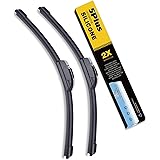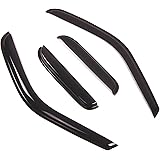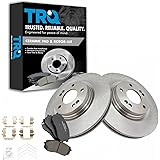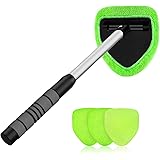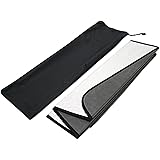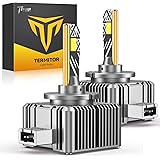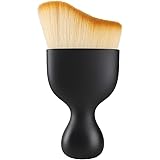Table of Contents
Choosing the right tires for your vehicle can be tough. You might wonder between 215 and 225 tires. The width of your tires affects your car’s performance, fuel use, and how it feels to drive. But what does this mean for you?
Does a wider tire mean better handling and more control on the road? Or does it just cost more to fill up without big benefits? Knowing the differences between 215 and 225 tires helps you choose the best for your driving style.
Key Takeaways
- Understanding the impact of tire width on vehicle performance.
- Comparing fuel efficiency between 215 and 225 tires.
- Assessing handling and control differences.
- Factors to consider when choosing between 215 and 225 tires.
- Potential cost implications of wider tires.
Understanding Tire Size Nomenclature
Knowing how to read tire size is key for safe and good performance. The numbers and letters on your tire tell you its size, how much weight it can carry, and its speed limit.
What Tire Numbers Mean
Tire size is shown as a series of numbers and letters, like 215/60R17. The first number, 215, shows the tire’s width in millimeters. The number after the slash, 60, is the aspect ratio, or the tire’s height to width ratio. The letter R means it’s a radial tire. Lastly, 17 is the wheel diameter in inches.
Breaking Down the 215 and 225 Measurements
The main difference between 215 and 225 tires is their width. A 215 tire is 215 millimeters wide, and a 225 tire is 225 millimeters wide. This 10-millimeter difference can change how your car handles and performs. Here’s a comparison table to help you see the difference:
| Tire Size | Width (mm) | Aspect Ratio | Diameter (inches) |
|---|---|---|---|
| 215/60R17 | 215 | 60 | 17 |
| 225/60R17 | 225 | 60 | 17 |
The table shows the width difference between 215 and 225 tires, with other dimensions the same. This difference can affect your car’s traction, handling, and overall performance.
It’s important to understand these measurements when choosing tires for your car. The width, aspect ratio, and wheel diameter all impact the tire’s performance and fit with your vehicle.
Physical Difference Between 215 and 225 Tires
Knowing the physical differences between 215 and 225 tires is key for choosing the right tires. The main differences are in width, sidewall height, and overall diameter.
Width Comparison
The width is the first thing you notice. A 215 tire is 215 millimeters wide, and a 225 tire is 225 millimeters wide. This 10-millimeter difference affects how the vehicle handles and grips the road.
| Tire Size | Width (mm) |
|---|---|
| 215 | 215 |
| 225 | 225 |
Sidewall Height Considerations
The sidewall height is another important factor. It’s shown as a percentage of the tire’s width. For example, a 215/60R17 tire has a sidewall height of 129 mm, which is 60% of its width. The sidewall height affects the ride comfort and handling.
Overall Diameter Differences
The overall diameter is based on width, sidewall height, and rim size. A 215/60R17 tire is about 664 mm in diameter, while a 225/60R17 tire is about 676 mm. This difference affects the speedometer reading, gearing, and performance.
In summary, the main differences between 215 and 225 tires are in width, sidewall height, and overall diameter. Understanding these differences helps choose the right tires for your vehicle and driving needs.
Impact on Vehicle Performance
Tire size, whether 215 or 225, greatly affects how a vehicle performs. The difference between these sizes changes how a car handles, its grip, and the overall driving feel.
Handling Characteristics
The size of a tire impacts a vehicle’s handling. A 225 tire, being wider, offers better handling. This is because it has a larger contact patch with the road. This leads to more responsive steering and better maneuverability.
Key Handling Differences:
- Increased responsiveness with 225 tires
- Potential for improved stability during turns
- Possible reduction in braking distance
Traction and Grip
Traction and grip are key for safety and performance. The wider 225 tire generally offers more traction. This is because it has a larger contact area, which is good in dry conditions. But, performance can also depend on the tire’s compound and tread design.
“Tire traction is not just about size; it’s also about the tire’s ability to interact with the road surface.” –
Cornering Stability
Cornering stability is another area where 215 and 225 tires differ. The wider tire tends to offer better stability during turns. This is because of its wider base, which enhances stability and reduces the chance of losing control.
| Tire Size | Cornering Stability | Traction |
|---|---|---|
| 215 | Good | Moderate |
| 225 | Excellent | High |
In conclusion, choosing between 215 and 225 tires can significantly impact vehicle performance. This is true for handling, traction, and cornering stability. Drivers should think about these factors based on their driving habits and preferences.
Fuel Economy Considerations
Knowing how tire size affects fuel economy is key, when choosing between 215 and 225 tires. The size of your tires greatly impacts your vehicle’s fuel efficiency. Different sizes have different levels of rolling resistance and aerodynamic drag.
Rolling Resistance Differences
A narrower tire, like the 215, usually has lower rolling resistance than a wider tire, like the 225. This is because a narrower tire has a smaller contact patch with the road. This results in less friction and energy loss.
Lower rolling resistance means your vehicle needs less energy to move. This can improve your fuel economy.
Long-term Fuel Consumption Impact
The long-term fuel consumption difference between 215 and 225 tires is noticeable, for drivers who travel long distances. The difference might seem small per mile, but it adds up over time. For example, a vehicle with 215 tires might get slightly better fuel economy on long trips than one with 225 tires.
Driving habits, vehicle maintenance, and tire pressure also affect fuel economy. Properly inflated tires, regardless of size, can improve fuel efficiency. So, when comparing 215 versus 225 tires, consider the overall package. Look at how well the tires are maintained and how they are used.
Ride Comfort and Noise Levels
Ride comfort and noise levels are key when picking between 215 and 225 tires. The tire size greatly affects how smooth the ride is and how much noise it makes.
Shock Absorption Differences
The width of a tire affects how it handles road shocks. A narrower tire, like the 215, might feel softer because it can better absorb bumps. A wider tire, like the 225, could feel firmer because of its bigger contact area.
Road Noise Comparison
Tire size also impacts road noise. Wider tires, like the 225, can make more noise because they cover more of the road. So, the 225 tire might be noisier than the 215 tire, mainly on rough roads.
To understand the differences, let’s compare ride comfort and noise levels between 215 and 225 tires:
| Feature | 215 Tire | 225 Tire |
|---|---|---|
| Shock Absorption | Generally better due to narrower width | May be slightly stiffer |
| Road Noise | Tends to be quieter | May generate more noise |
| Ride Comfort | Potentially more comfortable | May be less comfortable due to wider width |
In conclusion, picking between 215 and 225 tires means thinking about ride comfort and noise. The 215 tire might offer a smoother and quieter ride. But, the 225 tire could give better handling, which might be more important for some drivers.
Fitment Considerations for Your Vehicle
Choosing between 215 and 225 tires needs careful thought. You must ensure they fit your vehicle well. This is key for safety, performance, and avoiding damage.
Rim Width Compatibility
Rim width is a major factor. Both 215 and 225 tires need specific rim sizes. A 215 tire fits on rims from 6 to 7.5 inches. A 225 tire needs rims from 7 to 8.5 inches.
Recommended Rim Width for Tire Sizes:
| Tire Size | Minimum Rim Width | Maximum Rim Width |
|---|---|---|
| 215 | 6 inches | 7.5 inches |
| 225 | 7 inches | 8.5 inches |
Wheel Well Clearance
Wheel well clearance is also crucial. The 225 tires might not fit in the same space as 215 tires. This could cause rubbing against the fender or suspension, leading to damage, during turns or when the suspension compresses.
“Ensuring adequate wheel well clearance is essential to prevent tire rubbing and potential damage to your vehicle’s suspension and bodywork.”
Suspension Considerations
When picking between 215 and 225 tires, think about your suspension. The 225 tires are slightly larger. This can affect how your suspension moves and might need adjustments for better handling and comfort.
In short, when choosing between 215 and 225 tires, consider rim width, wheel well clearance, and suspension. This ensures a good fit and the best performance for your vehicle.
Weather Performance Comparison
It’s important to know how 215 and 225 tires handle different weather. The tire’s width affects its performance in wet, snowy, and hot conditions. This is key for safety.
Wet Weather Handling
Handling in wet weather is critical. Wider tires, like the 225, have a bigger contact patch. This can improve grip on wet roads. But, they might hydroplane more because water has to be displaced over a longer distance.
Narrower 215 tires have less surface area. This makes them less likely to hydroplane. They might handle better in wet conditions.
Key differences in wet weather handling between 215 and 225 tires include:
- The 225 tire’s wider contact patch can improve grip on wet roads.
- The 215 tire may be less prone to hydroplaning.
Snow and Ice Traction
Performance in snow and ice is also important. Narrower tires, like the 215, work better in snow. They press down harder, improving grip. Wider tires, like the 225, might not grip as well in deep snow.
The main differences in snow and ice traction are:
- 215 tires generally offer better traction in snowy conditions.
- 225 tires may not be as effective in deep snow.
Hot Weather Performance
In hot weather, how well a tire handles heat matters. Wider tires, like the 225, generate more heat. This can lead to wear and affect handling. Narrower 215 tires might handle better in heat because they generate less heat.
Hot weather performance differences include:
| Tire Size | Heat Generation | Handling Impact |
|---|---|---|
| 215 | Less heat generation | Potentially better handling |
| 225 | More heat generation | Potential for decreased handling |
Choosing between 215 and 225 tires depends on your local weather. Knowing these differences helps ensure your vehicle performs well and safely.
Cost Differences and Value Analysis
Choosing between 215 and 225 tires often comes down to cost and value. It’s key to look at both the upfront price and the long-term benefits they offer.
Initial Purchase Price Comparison
Narrower tires, like the 215 size, are usually cheaper than wider ones, like the 225 size. This price gap mainly comes from the different materials used in making them. On average, 215 tires are $10 to $30 less per tire than 225 tires, depending on the brand and features.
Several factors affect the initial cost:
- Tire brand and model
- Tread pattern and design
- Speed rating and load capacity
- Additional features like run-flat technology or reinforced sidewalls
Long-term Value Considerations
While the initial cost matters, so does the long-term value of your tire choice. Wider tires (225) often give better traction and handling, which can improve safety and potentially last longer if driven carefully. Narrower tires (215) might save fuel due to lower rolling resistance.
When looking at long-term value, consider these points:
- Tread life: Compare the expected mileage of both tire sizes.
- Fuel efficiency: See how each tire size affects your vehicle’s fuel use.
- Handling and safety: Check how each impacts your vehicle’s handling and safety.
While 225 tires might cost more at first, their longer lifespan could offer better value over time. On the other hand, the fuel savings from 215 tires could make up for their lower initial cost.
In conclusion, choosing between 215 and 225 tires should involve a detailed look at both the initial cost and long-term benefits. By considering your driving habits, vehicle specs, and budget, you can make a choice that balances cost and value.
Tire Wear Patterns and Longevity
It’s important to know how 215 and 225 tires wear differently. The size of the tire affects its wear over time. This impacts both how long it lasts and your vehicle’s efficiency.
Tread Wear Differences
The design and size of a tire’s tread are key to its wear. 215 tires are narrower and may wear differently than 225 tires. Their narrower width can cause uneven wear if not maintained well.
225 tires are wider and might wear more evenly. But, many factors like driving habits and road conditions also play a part in wear.
Expected Lifespan Comparison
A tire’s lifespan is tied to its wear pattern. Even wear means a longer life. But, 215 tires might wear unevenly due to their narrow width.
Regular rotation, proper inflation, and wheel alignment are key to extending both 215 and 225 tire lifespans. The tire’s design and compound also affect its durability and performance.
When comparing lifespans, look at the manufacturer’s specs and user reviews. Some 225 tires have advanced compounds that make them last longer than 215 tires in some cases.
Common Vehicle Applications
Car makers pick tire sizes like 215 or 225 based on the car’s design and use. Knowing which vehicles these sizes fit can help you choose the right one for your car.
Vehicles That Typically Use 215 Tires
The 215 tire size is common in smaller cars, like some sedans and compact cars. These tires balance fuel efficiency with good handling.
- Compact sedans like the Toyota Corolla
- Smaller SUVs such as the Honda CR-V
- Some models of the Volkswagen Golf
Vehicles That Typically Use 225 Tires
The 225 tire size fits slightly larger cars or those needing more grip and stability. This includes some crossovers and bigger sedans.
- Mid-size sedans like the Toyota Camry
- Larger SUVs such as the Subaru Forester
- Some models of the BMW 3 Series
Here’s a table comparing typical vehicles for 215 and 225 tires:
| Vehicle Type | 215 Tires | 225 Tires |
|---|---|---|
| Compact Sedans | Toyota Corolla | Toyota Camry |
| SUVs/Crossovers | Honda CR-V | Subaru Forester |
| Luxury Vehicles | Some Volkswagen Golf models | BMW 3 Series |
Choosing between 215 and 225 tires depends on your car’s specs and driving habits. Always check your car’s manual for the best fit for performance and safety.
215 vs 225 Tire Size Comparison: Which tire size is better for handling and performance?
The choice between 215 and 225 tires affects a vehicle’s handling and performance. It’s key to weigh the pros and cons of each size for handling.
225 tires are known for their dry grip and stability. This makes them a top pick for those who love performance driving. Their wider tread gives a bigger contact patch with the road, boosting traction and cornering.
On the other hand, 215 tires also handle well but don’t quite match 225 tires in dry grip and stability. Still, they’re good for drivers who don’t drive at the edge.
Key differences in handling and performance between 215 and 225 tires include:
- Wider tread width of 225 tires enhances traction and cornering stability.
- Better dry grip with 225 tires, improving overall handling.
- 215 tires may offer more fuel efficiency and potentially lower costs.
The decision between 215 and 225 tires depends on what matters most to the driver. If performance driving is key and fuel efficiency is less important, 225 tires might be the way to go. But for those looking for a balance between performance and cost, 215 tires could be the better choice.
Mixing Tire Sizes: Risks and Considerations
Vehicle owners often face the decision of mixing tire sizes. This choice can affect how well the vehicle performs and how safe it is. Using both 215 and 225 tires on the same vehicle can cause several problems.
Differential and Drivetrain Stress
Mixing tire sizes puts uneven stress on the vehicle’s differential and drivetrain. The differential handles the speed difference between the wheels. Different-sized tires can cause uneven wear and extra stress, leading to early wear or failure.
Differential Stress Implications:
- Increased wear on differential components
- Potential for costly repairs
- Possible reduction in vehicle lifespan
Handling Implications
Tire size greatly affects a vehicle’s handling. Mixing sizes can cause:
- Uneven traction
- Imbalanced handling
- Reduced stability, making cornering or emergency maneuvers risky
The impact on handling is a big concern in bad weather or at high speeds.
Safety Concerns
Mixing tire sizes raises serious safety concerns. The main worries include:
| Safety Concern | Description |
|---|---|
| Reduced Traction | Different tire sizes can cause uneven traction, making the vehicle pull to one side or lose control. |
| Increased Stopping Distance | Mixed tire sizes can make stopping longer due to uneven braking. |
| Loss of Control | The risk of losing control of the vehicle increases, making driving in bad conditions more dangerous. |

In summary, mixing tire sizes like 215 and 225 can harm a vehicle’s performance, safety, and lifespan. It’s important for owners to think carefully and seek advice before making a choice.
How to Make the Right Choice for Your Vehicle
To choose between 215 and 225 tires, knowing your vehicle’s needs is key. The right size can affect how well your car performs, stays safe, and uses fuel.
Consulting Manufacturer Recommendations
Start by checking what your car maker suggests for tire sizes. Look in your owner’s manual or on the driver’s side doorjamb. Choosing tires that meet your car’s standards is important for safety and performance.
Considering Your Driving Style
Your driving style affects which tire size is best for you. If you want better handling, a 225 tire might be better. It gives more grip and stability. But, if saving fuel is more important, a 215 tire could be the way to go.
Balancing Performance and Economy
Finding a balance between performance and fuel economy is crucial. Wider tires improve handling but might use more fuel. Narrower tires save fuel but might not handle as well. Think about what matters most to you and your driving habits.
Choosing between 215 and 225 tires depends on your car’s specs, your driving style, and what you value more: performance or economy.
Conclusion
Choosing the right tire size is key for your vehicle’s performance, safety, and fuel efficiency. The debate between 215 and 225 tires depends on several factors. These include your driving habits, your vehicle’s specs, and what you prefer.
A 215 vs 225 tire summary shows the main differences are in width, sidewall height, and diameter. These changes affect how your car handles, its traction, fuel use, and comfort. Knowing these differences helps you make a better choice.
When deciding between 215 and 225 tires, think about what you need and what the maker suggests. Consider your driving style, the weather you usually drive in, and what performance features are most important to you. This way, you can pick the best tire size for a safe, efficient, and fun drive.
In the end, choosing between 215 and 225 tires should match your vehicle’s needs and your driving habits. This ensures your car is set up for a safe, efficient, and enjoyable ride.


